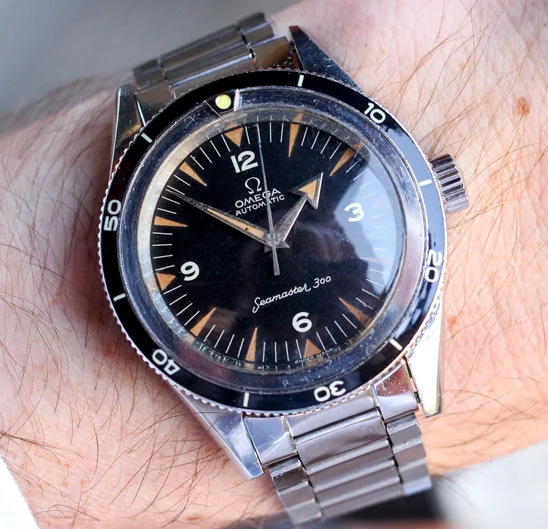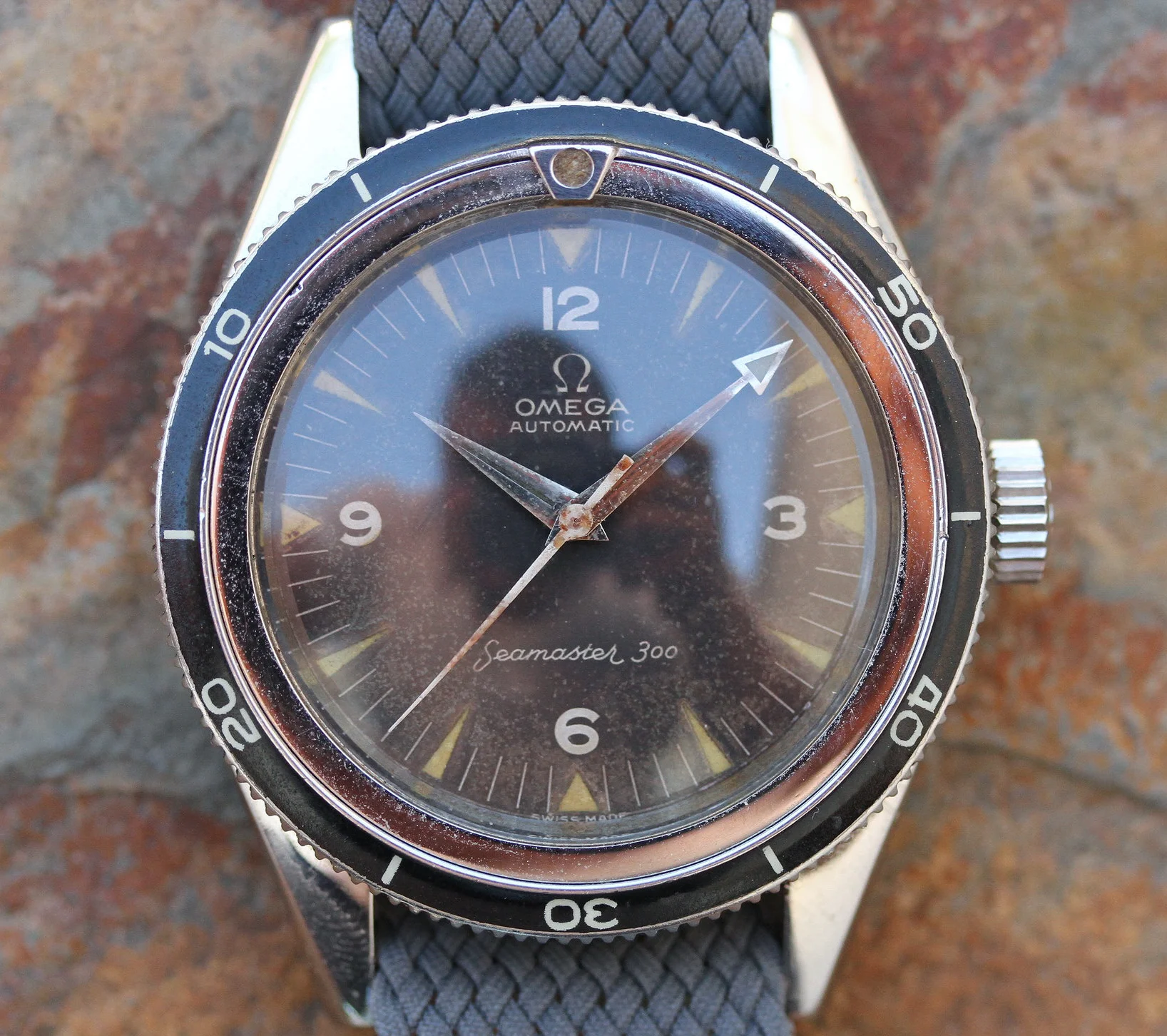Omega Seamaster CK2913: A Brief History and Collector's Guide

Famously worn by the likes of James Bond, the Omega Seamaster series has endured as one of the most classic dive watch lines in history. In constant production since 1948, the Seamaster line has helped to define what a dive watch is, all the while leading the way in style, cultural impact and technical innovation. The Seamaster 300 reference CK2913, while not the very first in the Seamaster line, was the springboard for the innovation and legacy that was to follow the Seamaster through well over half a century of fame.

Though the CK2913 was released in 1957, the Seamaster line technically began in 1948, with a release auspiciously coinciding both with Omega’s 100th anniversary and the London Olympics, for which Omega was the official timekeeper. The original Seamaster was tested to water resistance of up to 60 meters, and was marketed as a sort of water-proof practical dress watch – not quite a tool for professional divers, but far from a delicate dress watch that couldn’t handle a day at the beach. This first generation of Seamasters took cues from watches that Omega designed for the British military, most notably visible in the solid cases, utilitarian design, legible dials and reliable movements. The Seamaster’s origins as a practical dress watch, only later evolving into a dedicated practical tool for divers, gives some insight into its ability to retain a classic, refined look while being also recognizable and functional as a dedicated element of a diver’s toolkit.
There are 8 variations of the CK2913, starting with the 2913-1 which was first introduced in 1957 up to the 2913-8, released in 1961. The CK2913 was then succeeded by the references 14755 and 165.014. Ironically, despite the writing “Seamaster 300” on the dial, it was only rated to dive to depths of 200 meters, which Omega claimed was due to limitations in the testing equipment, and not the watch.

CK2913-3 with broad arrow hour hand and straight second hand
Image courtesy of @Bazamu

CK2913-7 with small arrow minute hand and lollipop second hand
Image courtesy of Phillips Auction

CK2913-8 with small arrow minute hand and straight second hand
Dial and Hands
All CK2913 variants shared the same dial design. The matte dial featured triangular hour indices with recessed radium plots, and white Arabic numerals at each quarter hour, a design which helped to increase legibility due to the contrasting shapes and font types for the large numerals as well as the radium lume. The first three iterations of the CK2913 typically featured the broad arrow hand set, with a large arrow on the hour hand and a narrower, pointed minute hand, along with a straight seconds hand. Variants 2913-4 to 2913-8 featured a pointed hour hand and a long, small-arrow minute hand with a straight second hand, with only the 2913-7 varying by using a lollipop seconds hand.
Bezel
Among the eight variants produced, the first two typically features countdown bezel inserts, and the following six usually came with forward count bezels. The forward count bezel is used for timing the elapsed time of underwater dives, whereas the countdown bezel being used as a timer. The sparse bezel inserts are quite thin, and only display ten minute numbered markings with notches at the five minute mark, in a font distinct from that displayed on the dial itself. The insert is also accented by a small circle of radium lume set into a slightly elevated rectangle at the twelve o’clock position. The bezel itself is a coin-edge stainless steel, matching the case, while the bezel inserts were made of bakelite, which has been a common area of breakage and replacement over time.
Countdown bezel
|
Forward count bezel |
Replacement countdown bezel insert
Image courtesy of Lunar Oyster
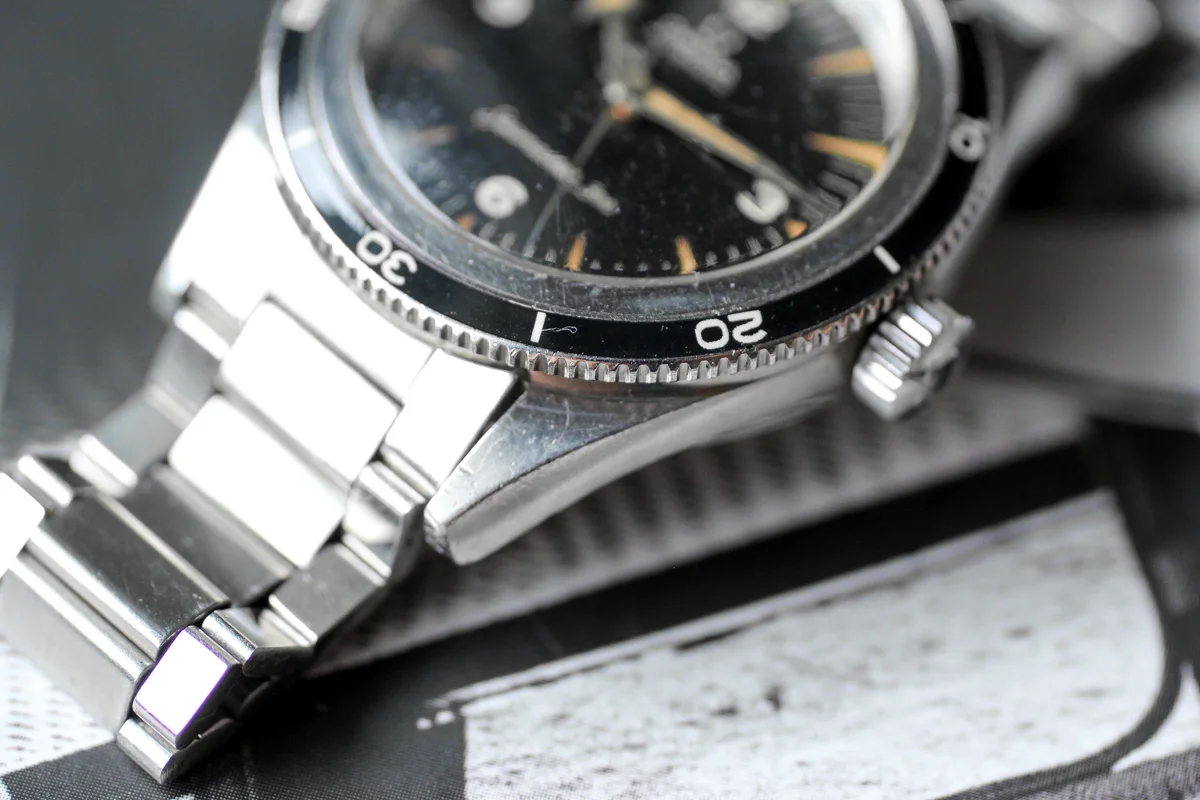
Straight lugs with visible bevels
Image courtesy of Bazamu
Case
The stainless-steel cases for all models were made by Hugenin Freres LeLocle, with the HF stamp appearing inside of the screw back case. The case features a narrowing, thin, straight-lug design, with the taper of the beveled lugs allowing the watch to maintain a good sense of proportion and stability. The case diameter was sized at 38.5mm, striking a balance between wrist presence and legibility.
Among the eight variants of the CK2913, there are three various case back designs. The 2913-1 caseback design has engraved sides with no engravings on the flat back. The 2913-2 and 2913-3 casebacks feature the iconic omega seahorse logo, and the final design seen on all later 2913 references was similar aside from variations in the text engraving. The CK2913 also incorporated a stainless-steel 7077 flat link bracelet with #6 end links.
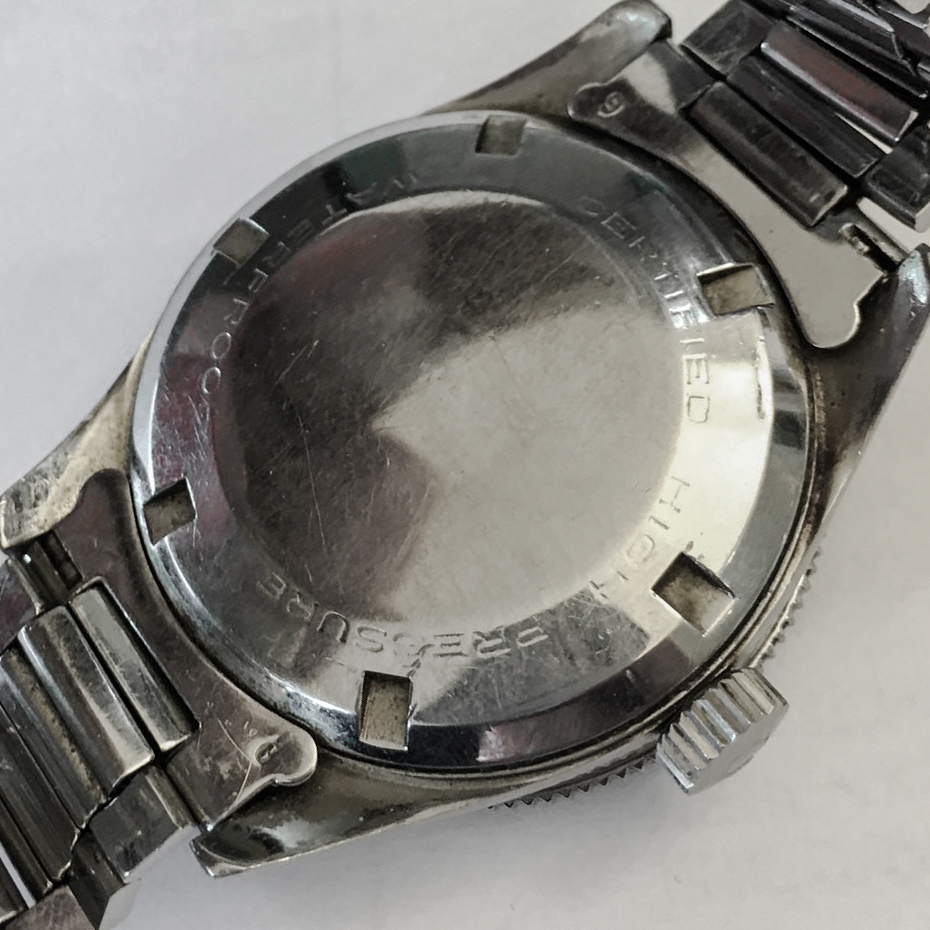
Caseback variant 1
Image courtesy of Francoiscevert (Omega Forums)
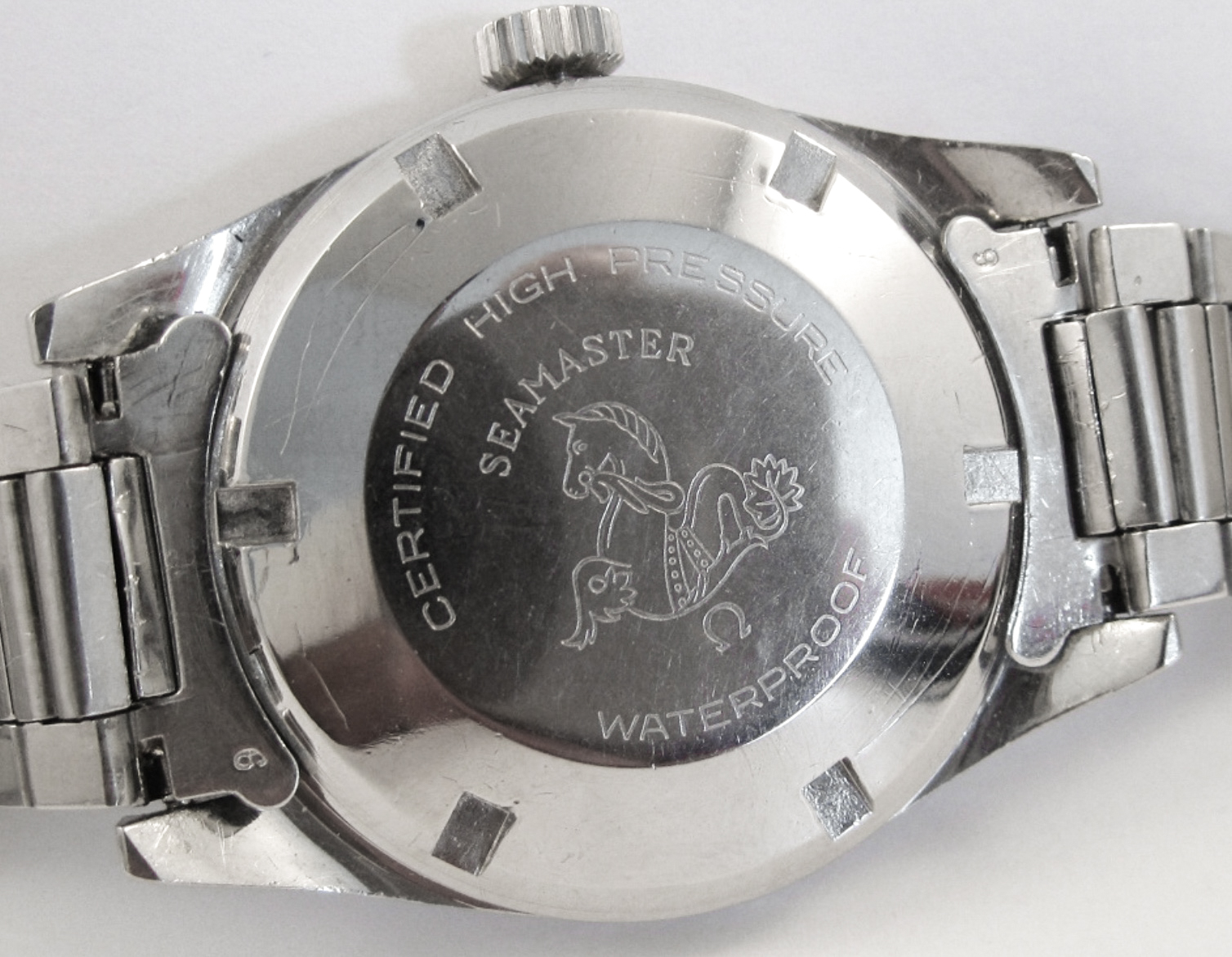
Caseback variant 2
Image courtesy of Marturx

Caseback variant 3
Image courtesy of Lunar Oyster
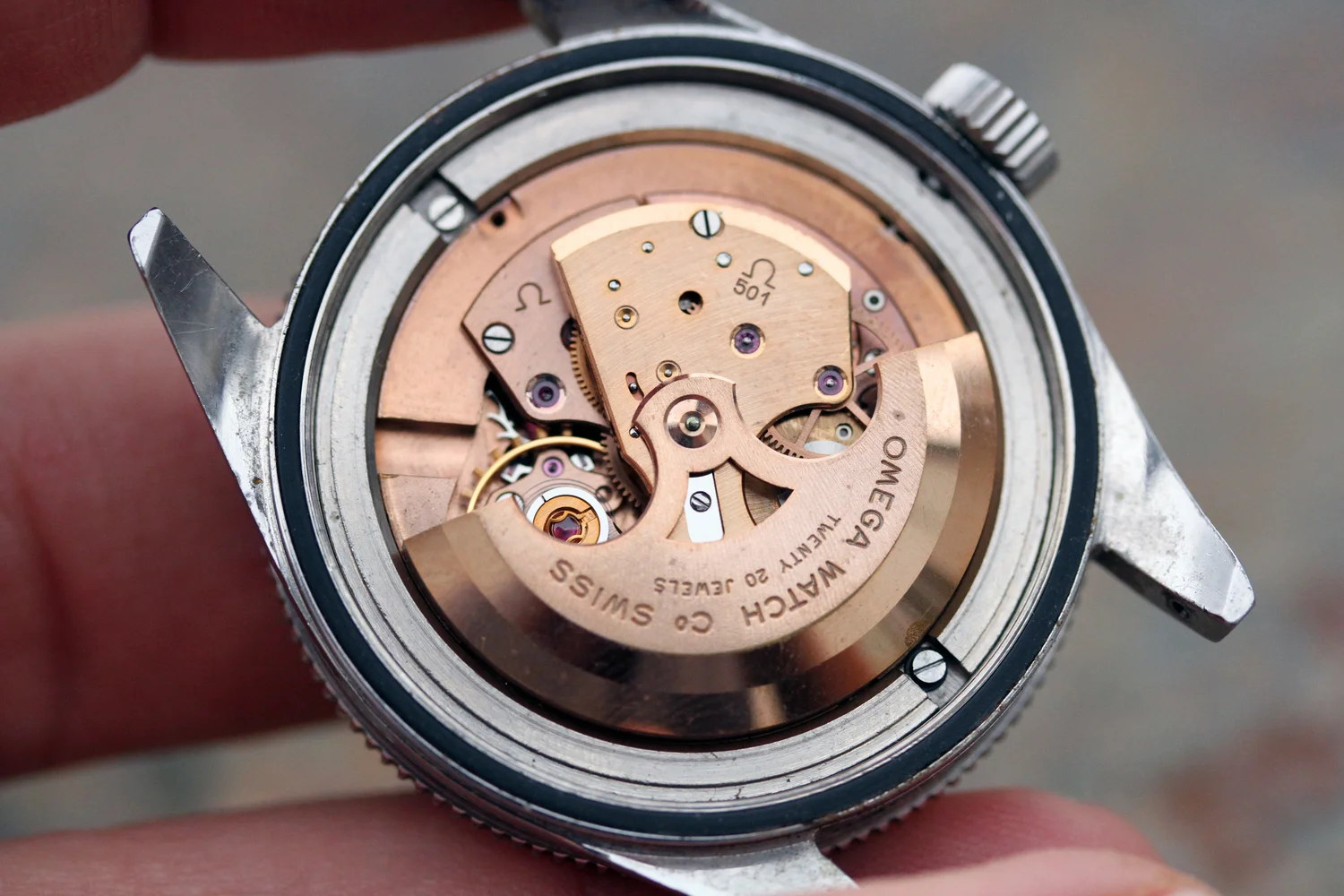
Omega Caliber 501
Image courtesy of Lunar Oyster
Movement
The CK2913 was powered by the self-winding caliber 501 movement, with CK2913 models delivered to the US using the caliber 500 variant instead. The copper-finished 500-series of movements was produced by Omega from 1956 to 1960 before being replaced, and several improvements and iterations of the movement were produced by Omega during this time frame. The movements were all 28mm in diameter, 5.55mm high, ran at 6 beats per second, and had a 46-hour power reserve. The caliber 500 featured 17 jewels whereas the caliber 501 featured 19/20 jewels.
The Seamaster line has exploded far beyond Omega’s original 1948 goal of producing a simple, durable dress watch. What we got, starting with 1957’s CK2913 was the beginning of a legacy of refined, durable and innovative watches which helped bring the diver through the mainstream to the status of a cultural icon. Like James Bond who famously donned the CK2913’s successors, this watch endures as a perfect melding of classicism and innovation, in both style and technology.
Sources:

